"A grad poster presentation looking at prevalence of acute gastrointestinal illness (AGI) in Rigolet, Nunatsiavut, earned kudos at a recent Arctic Change conference. Kate Bishop-Williams, a PhD student in the Ontario Veterinary College’s Population Medicine department, placed second at the Arctic Change conference, an annual conference which brings together Arctic researchers, stakeholders and decision-makers... " Click here for the full article...
Update from the Field: Kate and Vivienne in Uganda!
Written by Kate Bishop-Williams PART 3

In the second week, Vivienne and I were able to get started with the data, and we made great headway!
On Monday we had a variety of meetings that allowed us to set a finalized plan for data entry over the next number of weeks. The pace is different in Uganda, but we were very lucky to make progress in a single day. The hospital has set us up with office space to work in. We walk home through town and it is a great way to experience town and see what life here is really like.
Tuesday we began data entry. We used the binders to develop a template for data entry, collecting the variables that were important for research, but also what was important to the hospital for the records we w ould leave behind.
ould leave behind.
Wednesday was much like Tuesday, and we entered 4 more binders, 2 months of data records. We also met our new office mate! He is a red-tailed monkey and very friendly!
On Thursday we made our first visit to the Uganda Wildlife Authority (UWA) in Bwindi Impenetrable National Park. It was lovely to see the park for the first time! It is about a 45 minute walk from the park to the hospital, and a nice way to spend a break!

Saturday, we went to the football (soccer) fields and played frisbee (disk) with many of the local children! For many kids it was the first time they had seen a frisbee, and it was fun to show them how to throw it! We played for almost an hour and a half, and even then it was hard to end the game. We are doing lots of walking, which allows us to meet many people here and see more of the town!
When we went back for dinner at the lodge, the cook at our lodge, taught us how he makes mixed vegetables here, over a small charcoal stove. It is very dark in the kitchen, and we are so impressed by what he is able to do in it! He also taught us how he makes chipatis. Chipati is a small wheat flour patty that is rolled very thin and cooked in vegetable oil. They are delicious and we had a lot of fun learning how to make them!

On Sunday morning we went to church in town. The music was vibrant and exciting and the dancing was a lot of fun! The service was in Rakiga, so we did not understand much of what was said, but the feeling in the room was alive and exciting!
We went in the afternoon to the small shops, about an hour’s walk from our lodge, to buy some souvenirs. We met many of the craftsmen in their shops, and some taught us how they make things! We met wonderful people and were impressed with the crafts. We are excited to go back! After the shops, we climbed the mountain to Silverback Lodge for supper.
We have big goals for our data entry, so we are off to start again!
Update from the Field: Kate and Vivienne in Uganda!
Written by Kate Bishop-Williams PART 2
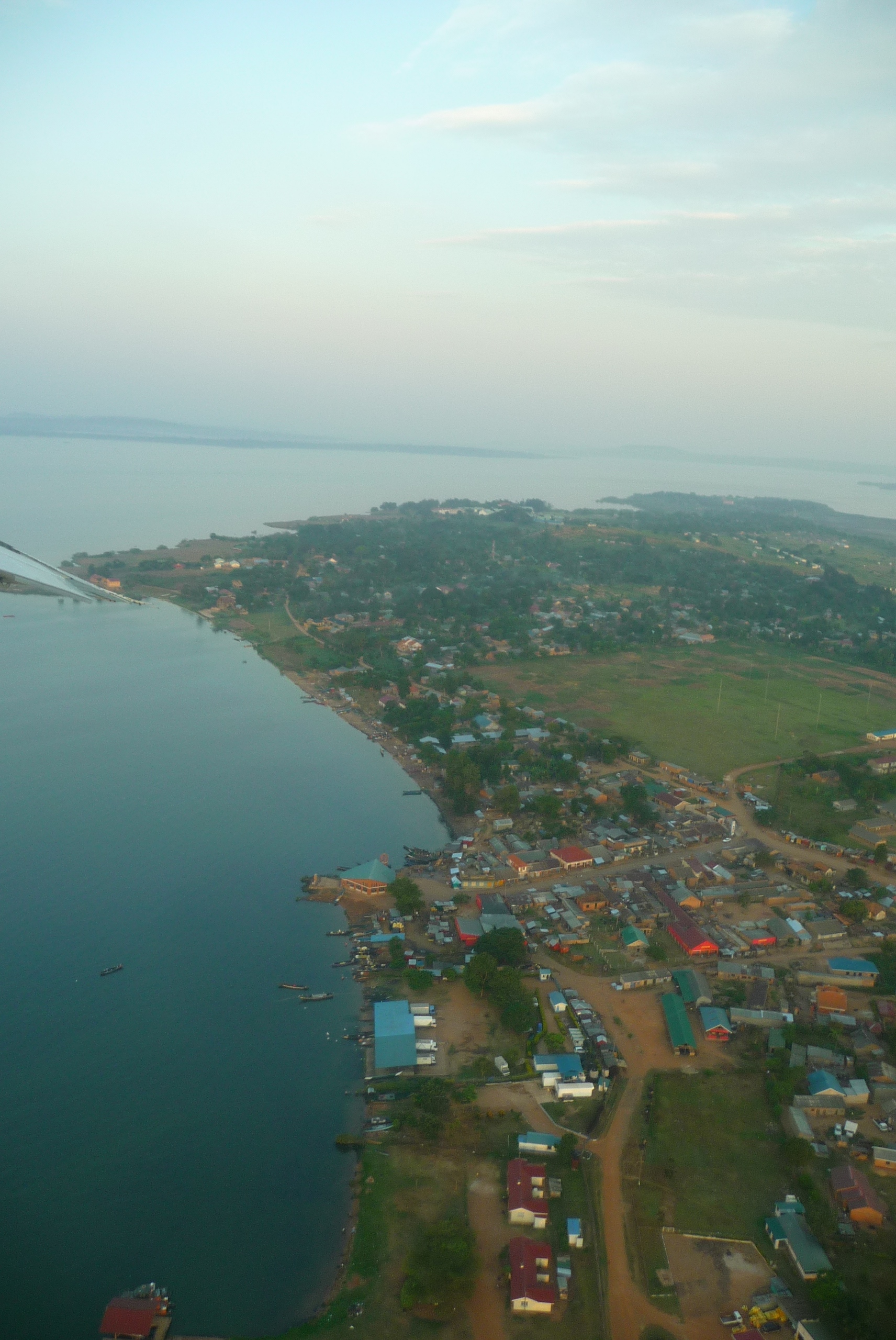
In the morning on January 29th, Vivienne, Sheri and I left for Kihihi on an Aerolink flight. The flights are small, domestic flights in Uganda, that service many regions of the country. The plane was a “caravan”, even smaller than the twin otter planes we fly in to Nunatsiavut! The views from the plane were spectacular. We flew over Lake Victoria and many of its islands, as well as over the hills and then the mountains in the Southwest. We stopped briefly in a small town, then another 15 minutes brought us to Kihihi. From Kihihi, we drove about 1 hour to reach Buhoma, our new home for the next 6 weeks!
On Saturday morning, we went to Bwindi Community Hospital, and we met with one of our new research partners. He was excited to have the data we are interested in, entered into comput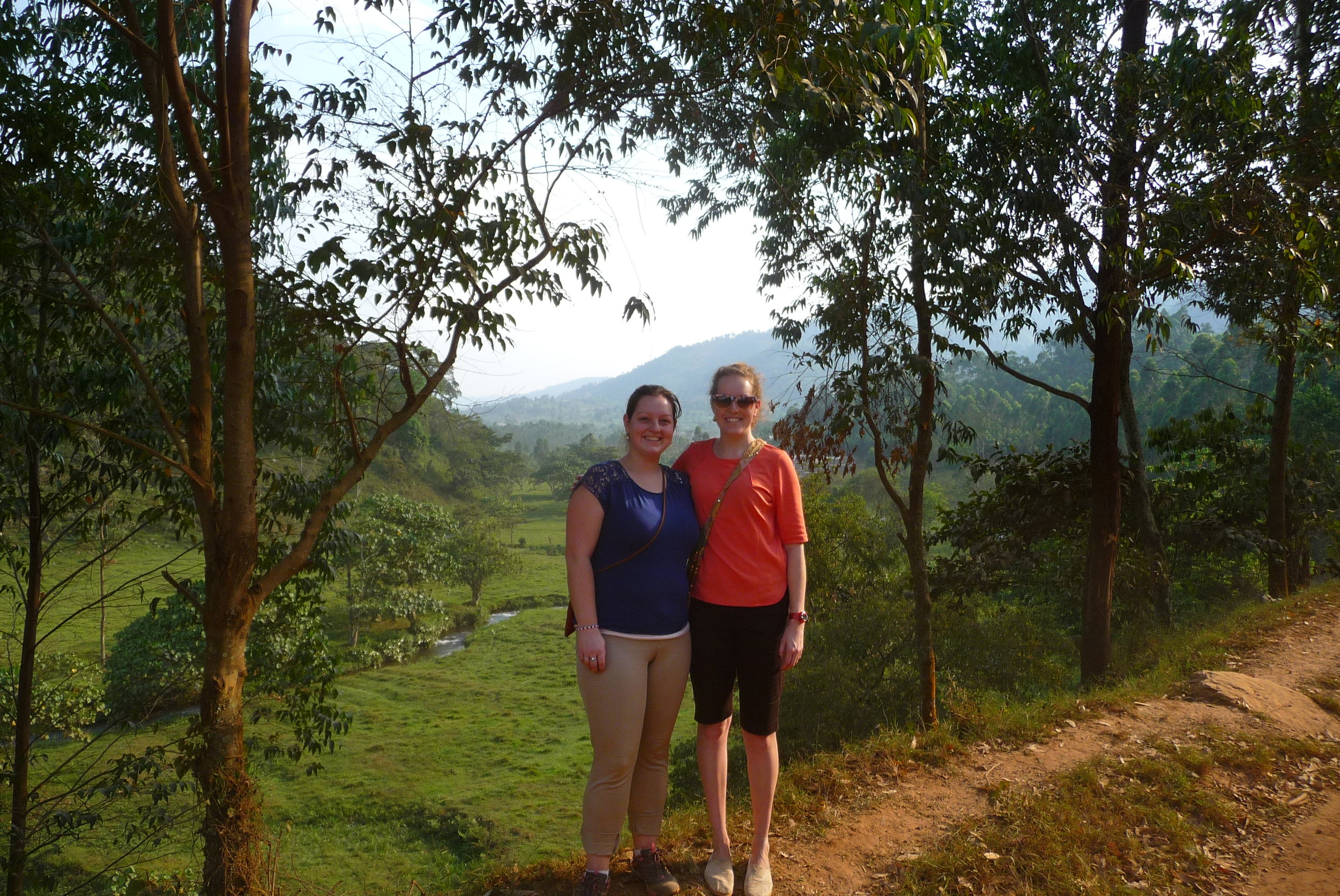 ers for a new digital database. In return for the data, we will do a small-scale evaluation of the surveillance system and databases for the hospital. Our meetings went very well, and we are excited to begin our work! In the afternoon, we said goodbye to Sheri, as she headed back to Canada, but we were so grateful she had been able to help us establish quick partnerships and begin working early!
ers for a new digital database. In return for the data, we will do a small-scale evaluation of the surveillance system and databases for the hospital. Our meetings went very well, and we are excited to begin our work! In the afternoon, we said goodbye to Sheri, as she headed back to Canada, but we were so grateful she had been able to help us establish quick partnerships and begin working early!

Sunday is a day of rest for most people in Uganda, and was a chance for us to do so as well. The time change to Uganda from home is 8 hours, and we were still quite tired. In the afternoon, we went for a walk, to explore our new surroundings. We are so excited about the beauty of Uganda, and so impressed by the greenery we see in every direction!
On Sunday night we went out to a lodge for dinner. We went to Silverback Lodge, for a gourmet meal. Silverback Lodge is located near the top of one of the mountains, and the seating area for dinners overlooks the valleys and surrounding mountains. It is right at the edge of the forest, so the birds are plentiful and sing beautifully.
Update from the Field: Kate and Vivienne in Uganda!
Written by Kate Bishop-Williams PART 1
On January 27th, 2015, we embarked on the journey of a lifetime, headed into fieldwork in Uganda for 7 weeks. Vivienne Steele, Sheri Harper and I, left Guelph at 6:00 PM, for a 10:00 PM flight to London. We travelled on a red-eye flight into Heathrow, for a short stop-over, and very shortly after we were headed to Entebbe, Uganda!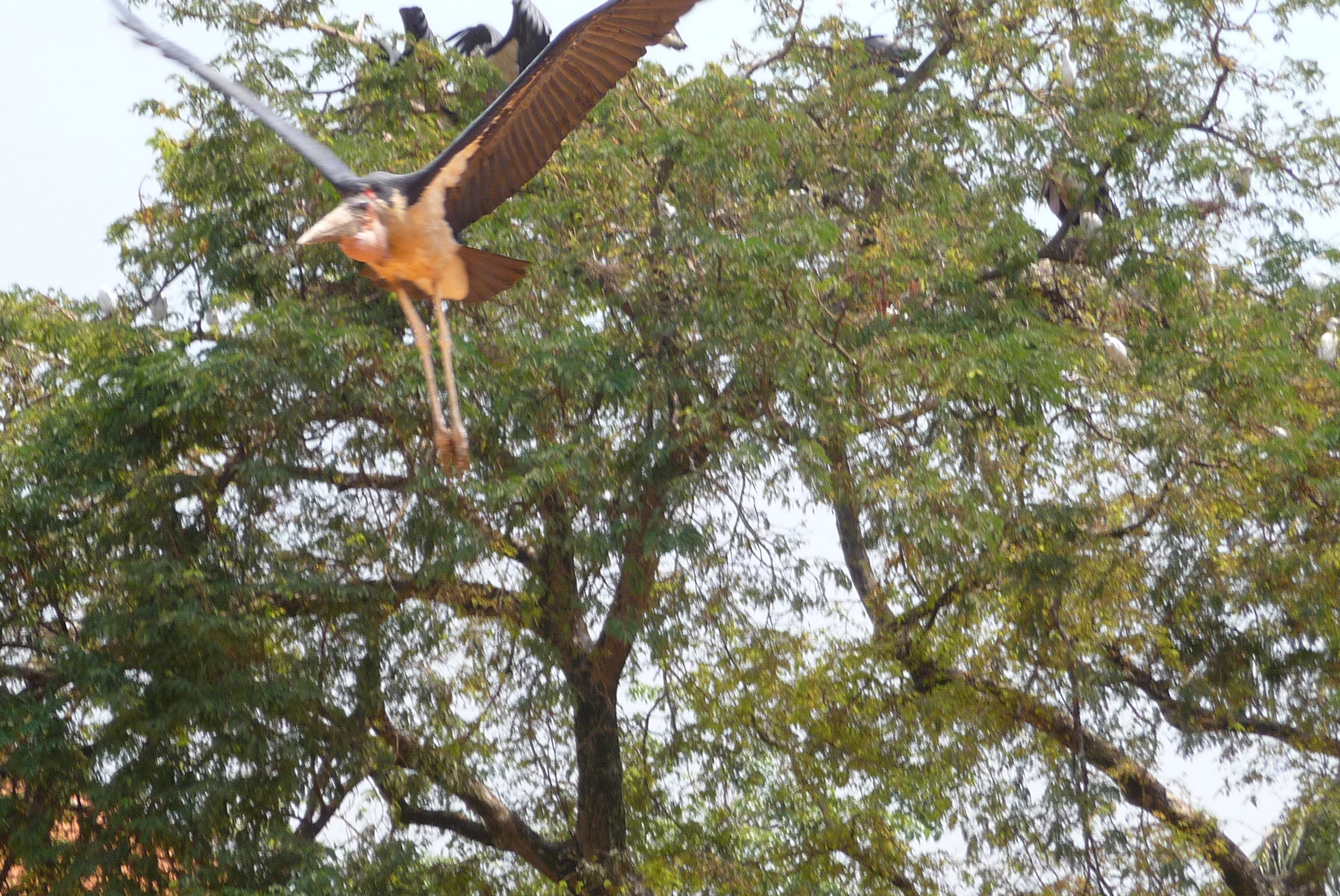
It was late when we arrived in Uganda, but when we retrieved our bags, we were greeted by our Ugandan partners from Makerere University in Kampala. They took us to the hotel we were staying in, about 40 minutes away. My first impression on leaving the airport was the incredibly beautiful, floral smell of Uganda. It is green and vibrant, and the flowers are always in bloom here!
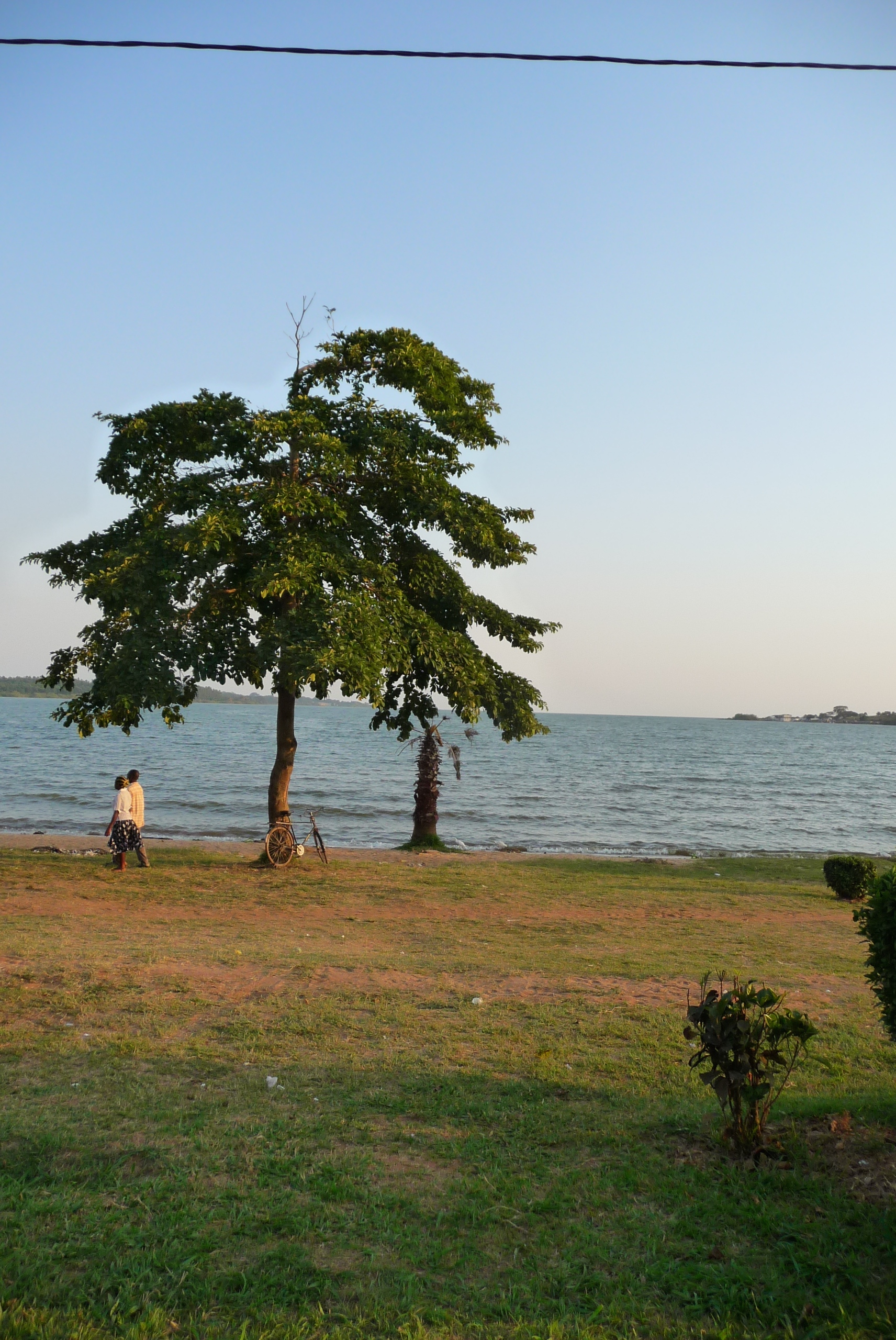 The next morning, in Kampala, we met with our researcher partners again. We met at the University, and found a table under the shade of a tree for our meeting. During the meeting, Vivienne and I explained our tentative plan for the fieldwork, and happily accepted any insights, wisdom and advice that was provided to us. We were also invited to see our research partner’s office, which was very important for us. From there, we spent a busy day in Kampala preparing for the rural area we would be working in. We needed to purchase internet dongles, telephone minutes and SIM cards, a power cord and adapter and so on. It was a very full day, but we got what we needed and headed back to Entebbe for the evening.
The next morning, in Kampala, we met with our researcher partners again. We met at the University, and found a table under the shade of a tree for our meeting. During the meeting, Vivienne and I explained our tentative plan for the fieldwork, and happily accepted any insights, wisdom and advice that was provided to us. We were also invited to see our research partner’s office, which was very important for us. From there, we spent a busy day in Kampala preparing for the rural area we would be working in. We needed to purchase internet dongles, telephone minutes and SIM cards, a power cord and adapter and so on. It was a very full day, but we got what we needed and headed back to Entebbe for the evening.
On the way to Entebbe, we passed Lake Victoria, a nd it was as beautiful as I had imagined! I was excited to see the lake, and had looked forward to it for weeks. Once in Entebbe, we arrived at Karibu Guest House, a beautiful boutique hotel for the night before we embarked to Kihihi in the morning.
nd it was as beautiful as I had imagined! I was excited to see the lake, and had looked forward to it for weeks. Once in Entebbe, we arrived at Karibu Guest House, a beautiful boutique hotel for the night before we embarked to Kihihi in the morning.
We were so excited to leave for Buhoma and begin our adventures in our new home!
Infographics Symposium 2015
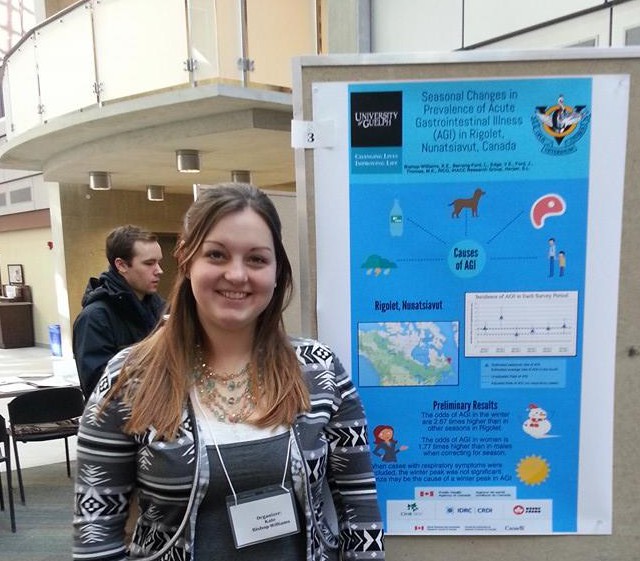 Written by Kate Bishop-Williams
Today was the EcoHealth Community of Interest and the KTT/KMb Graduate Student Learning Circle’s first ever Infographic Symposium! More than 70 people joined us throughout the day, with 15 presenters and 10 excellent judges! What a great networking opportunity!
Written by Kate Bishop-Williams
Today was the EcoHealth Community of Interest and the KTT/KMb Graduate Student Learning Circle’s first ever Infographic Symposium! More than 70 people joined us throughout the day, with 15 presenters and 10 excellent judges! What a great networking opportunity!
The Symposium was funded primarily through a generous grant from the Student Life Enhancement Fund (SLEF), and in part also by the Centre for Public Health and Zoonoses (CPHAZ), the Institute for Community Engaged Scholarship (ICES) at the University of Guelph and the EcoHealth Community of Interest (EHCoI)- Guelph.
Fifteen graduate students representing 5 of the 6 colleges at the University of Guelph participated and presented exceptional infographics! Ten judges came to help us choose the winners (who won cash prizes!) and represented the Public Health Agency of Canada, CPHAZ, ICES, Ontario Ministry of Agriculture and Food (OMAF) and the private consulting sector! We were so grateful for their commitment of time and effort to this event!
Below, you can see the 2 infographics I presented, as well as the amazing organizing team (Andrea Lamarre, Megan Racey, Tylar Meeks and Ellen McDonald (not shown)) and the poster winners!
The infographics presented today will be PUBLISHED on the CPHAZ website soon, and will be invited to present at the CPHAZ Symposium in the spring!
Congratulations to all of our presenters, especially our winners! Thanks to the many people who stopped by, asked questions and voted!
New Publication: The Burden of Diarrheal Disease for Indigenous Ugandan Batwa
ABSTRACT: "Acute gastrointestinal illness (AGI) is an important public health priority worldwide. Few studies have captured the burden of AGI in developing countries, and even fewer have focused on Indigenous populations. This study aimed to estimate the incidence and determinants of AGI within a Batwa Pygmy Indigenous population in southwestern Uganda. A retrospective cross-sectional survey was conducted in January 2013 via a census of 10 Batwa communities (n = 583 participants). The AGI case definition included any self-reported symptoms of diarrhoea or vomiting in the past 2 weeks. The 14-day prevalence of AGI was 6·17% [95% confidence interval (CI) 4·2–8·1], corresponding to an annual incidence rate of 1·66 (95% CI 1·1–2·2) episodes of AGI per person-year. AGI prevalence was greatest in children aged < 3 years (11·3%). A multivariable mixed-effects logistic regression model controlling for clustering at the community level indicated that exposure to goats [odds ratio (OR) 2·6, 95% CI 1·0–6·8], being a child aged < 3 years (OR 4·8, 95% CI 1·2–18·9), and being a child, adolescent or senior Batwa in the higher median of wealth (OR 7·0, 95% CI 3·9–9·2) were significantly associated with having AGI. This research represents the first Indigenous community-census level study of AGI in Uganda, and highlights the substantial burden of AGI within this population."
Arctic Change 2014 Conference
Reflection by Vivienne Steele
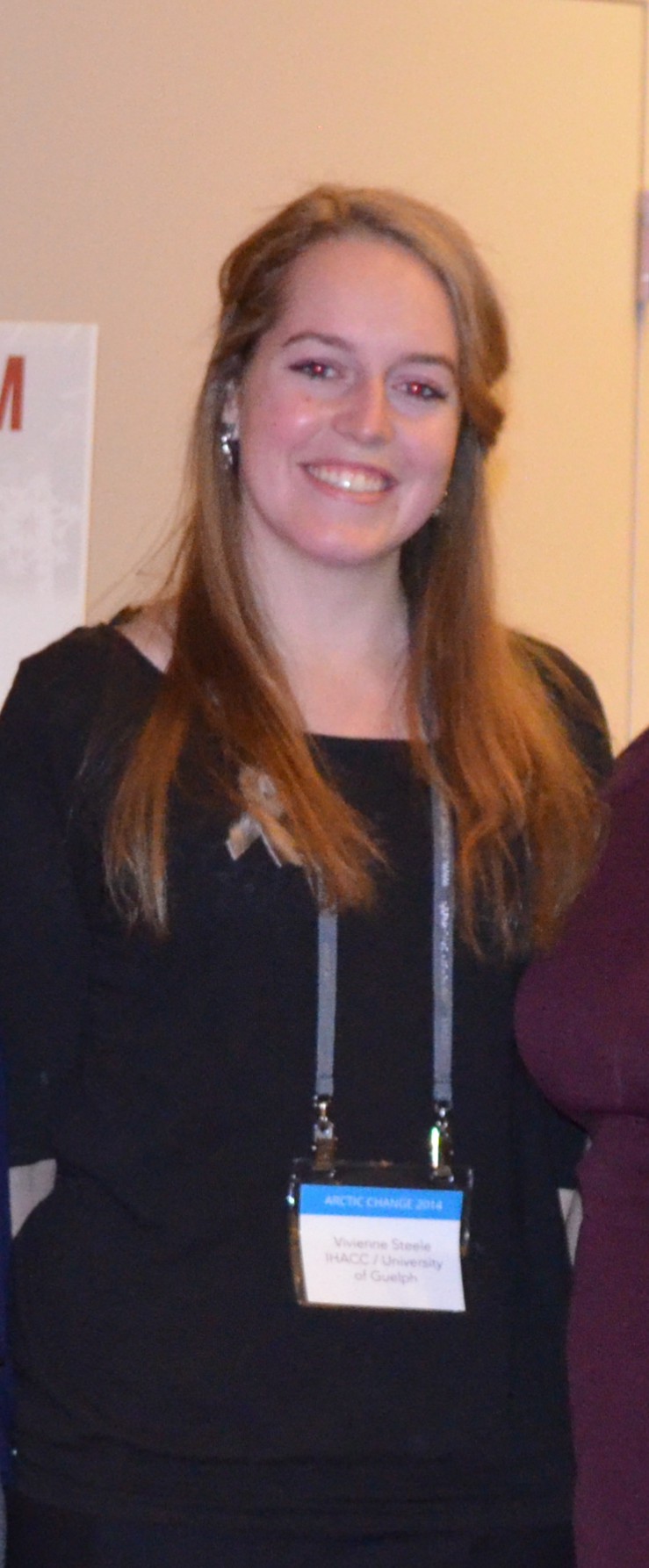 Friday was the fifth and final day of the 2014 Arctic Change Conference in Ottawa. A shorter day, the schedule included a morning of plenary sessions and topical sessions, and a brief afternoon session centered on “Next Steps” in Arctic research.
Friday was the fifth and final day of the 2014 Arctic Change Conference in Ottawa. A shorter day, the schedule included a morning of plenary sessions and topical sessions, and a brief afternoon session centered on “Next Steps” in Arctic research.
The first presenter was Denis Didier-Rousseau, of the French Arctic Initiative (FAI), who presented the objectives of the FAI, all of which focus on the need to implement an interdisciplinary type of project to address the impacts of climate change in the North. The initiative will address these impacts in the environmental, societal and economic and political spheres under which they fall. The FAI also focuses on incorporating Indigenous knowledge systems in each and every one of their research projects.
An engaging presentation on “permafrost as a priority” by Dr. Warwick Vincent from Laval University followed. Dr. Vincent works with the Arctic Development and Adaptation to Permafrost in the Tundra (ADAPT) group. Highlighting the recurrence of permafrost-focused posters and presentations throughout the conference, he re-iterated the importance of understanding and adapting to the changing landscape of permafrost in Canada’s North. Permafrost makes up 50% of Canada’s landscape and is the “foundation and underpinning of infrastructure in the North.” Dr. Vincent explained that we need to develop an integrative strategy for adapting and moving forward with coping strategies to climate change impacts.
The third presenter was Marc-André Bernier, from Parks Canada, who spoke of the momentous discovery of the H.M.S. Erabus, one of Sir John Franklin’s ships. The exciting discovery was made in September 2014, in Nunavut, waters, near King William Island, a mere 11-meters below the surface! Marc-André and his team used maps based on evidence from “the English” and the Inuit. He said that the information provided by the Inuit was key to finding the location. Many archaeologists in the past have tried unsuccessfully to find the H.M.S. Erabus, because they had had relied on solely the “English” evidence.
Next, our lab group dispersed to different topical sessions. I attended several speaker presentations, which revolved around the topic of housing in the North. The session was entitled: “We Don’t Need Housing, We need Homes: Social, Economic, Environmental, Cultural, Health and Well-being Dimensions of Housing Needs in the Arctic.” Presenters Caroline Inglis, Ron Baker, Marleny Bonnycastle, André Cassault, Marc Blouin and William Semple talked about the Inuit sense of “home” as opposed to house, and how these feelings should be incorporated into the design of homes in the North. The researchers asked the communities what they wanted in a home: space to cook and prepare meals, room for families, and proximity to one another and to the land. The architects showed designs featuring outdoor space for preparing country food, extra rooms for fostering children and circular neighbourhood shapes which brought people close to each other and to the ocean, the wildlife, and the sun.
After five intensive days of plenary, topical and social sessions, we prepared to head back to Guelph. The Arctic Change conference was a wonderful exposure to the incredible multitude of research projects underway in the North. Highlights included Peter Mansbridge’s presentation of the $1 million Arctic Inspiration Prize, the rich variety of presenters, researchers and community members, and especially the engaging topical sessions on Indigenous health and climate change.
Congratulations to Kate Bishop!
C ongratulations to Kate Bishop-Williams for winning second place ($600) in the Social and Health Science category at the Arctic Change 2014 Conference.
ongratulations to Kate Bishop-Williams for winning second place ($600) in the Social and Health Science category at the Arctic Change 2014 Conference.
Last Day of Arctic Change 2014
Reflection by Alexandra Sawatzky
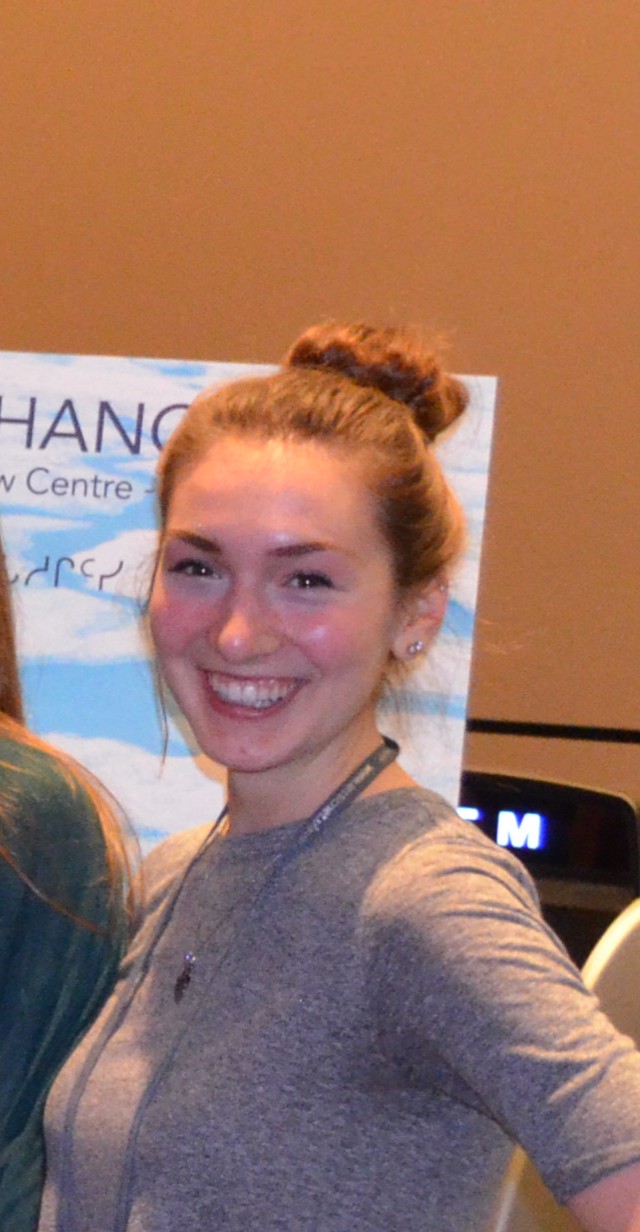 As today was the final day of the Arctic Change conference, it was especially difficult to choose which sessions to attend. I ended up deciding to attend a series of talks entitled “Why the Health Care System Needs to Be Closer to Inuit Perspectives”. A broad theme that emerged from each of the four speakers was the essential role of listening in order to communicate in meaningful, culturally sensitive ways.
As today was the final day of the Arctic Change conference, it was especially difficult to choose which sessions to attend. I ended up deciding to attend a series of talks entitled “Why the Health Care System Needs to Be Closer to Inuit Perspectives”. A broad theme that emerged from each of the four speakers was the essential role of listening in order to communicate in meaningful, culturally sensitive ways.
First, Dr. Johanne Morel, a paediatrician who has worked with Inuit communities in Northern Quebec for around 33 years, spoke about how cultural and language barriers often hinder quality of care. She emphasized the importance of recognizing cultural gaps in healthcare practice, as well as looking at access to healthcare from a wider perspective, towards trans-cultural and psychological access to care.
Following Dr. Morel, Minnie Grey, executive director of the Nunavik Regional Board of Health and Social Services, gave her insight on cultural sensitization aimed to non-Inuit workers in the medical sector. She demonstrated how Inuit today are effectively challenging the ideas of “outsiders” in order to implement services and programs that are aligned with their needs and values.
Next, Michèle Therrien talked about her role as a professor of language and Inuit culture, focusing on how words are an integral part of our wellbeing. She began her session by using the term “apurniq” – something coming up against something else – to describe the situation of non-Inuit researchers and healthcare providers who work choose to work in Inuit communities. Essentially, her main message was that different languages represent different systems of knowledge, and that the way we communicate can heal both the body and mind.
Jennifer Watkins, also of the Nunavik Regional Board of Health and Social Services, concluded the session by discussing the sharing of Inuit values. From her perspective, it’s possible to solve conflicts in harmonious ways despite coming from different worlds – to bridge cultural gaps, we need to start by listening, empathizing, and reflecting on how we communicate.
Overall, although it’s difficult to sum up my entire experience at Arctic Change, I can honestly say that I’m leaving feeling both humbled and inspired. I’m incredibly grateful to have had the opportunity to attend this conference, and I’m looking forward to continue working and collaborating with such a talented team!
Broadening Horizons: Arctic Change 2014
Reflection by Carlee Wright The Arctic Change conference has been an eye-opening experience over the past four days here in Ottawa. I have already had the opportunity to attend many sessions on various topics, and have learned so much about the amazing research that is being done all over the Arctic. This is the first Arctic conference I have attended, and I’ve really enjoyed being able to meet new people and talk about our different projects. I was both nervous and excited to present a poster and co-present an oral session for the first time as a Masters student. I’m extremely thankful for the support of my lab group and co-presenter Inez Shiwak, who played a vital role in making this first presentation a success.
From infrastructure challenges to changes in sea ice, health, and biodiversity, it is clear that Northern regions around the globe are all united by a common issue: climate change. It has been so inspiring to hear stories of the people who are dedicated to understanding climate change, in order to minimize impacts on people and the environment. The awards ceremony and banquet on Thursday night showcased just a few of these influential community members and researchers, and how important the contributions of each person are. To be part of a research group that is working towards some of the same goals is truly incredible; this conference has made me even more excited for the years to come, and all of the possibilities that lie ahead.
Arctic Change 2014: Day 2
Reflection by Kate Bishop-Williams Wednesday was the first official day of the Arctic Change Conference, and it was my first time at an Arctic specific conference. We heard a variety of interesting opening plenary talks, in particular, a great introduction by the President of the Inuit Circumpolar Council, Mr. Duane Smith. There were exciting topical sessions on health in the North throughout the day. Chris Furgal and Eric Loring chaired these sessions. It was great to see a series of presentations related to various health topics in the Arctic. Inez Shiwak and I co-presented a talk in the afternoon, entitled “Seasonal Changes in Prevalence of Acute Gastrointestinal Illness in Rigolet, Nunatsiavut, Canada.” We were happy with our presentation, and I was excited to have had the opportunity to co-present for the first time!
In the evening, an excellent second poster session offered an opportunity to discuss the same project with individuals from the earlier session and others who were not able to join us previously. It was great to be busy with questions for the entire two hours, and the Infographic we had designed was well received!
In the evening, Mr. Peter Mansbridge of CBC's The National hosted the Arctic Inspiration Prize ceremony. The ceremony included incredible talents of artists. I was thrilled to see esteemed throat singer, and Polaris Prize winner, Tanya Tagaq! Congratulations to FOXY for their incredible win of the Arctic Inspiration Prize! It was a wonderful day and I am excited for the days to come!
Science in Canada's North: How Will Climate Affect Health?
NOVEMBER 25, 2014 – Science in Canada's North: How Will Climate Affect Health?

Our changing climate affects us all, and Canada’s North will feel its impacts first and most robustly. We often think about climate’s effects on our environments, but it is already having effects on another area: human health. How will climate change affect access to healthcare, to physical fitness opportunities, and to affordable, healthy food? Will changes in weather, water, and migration patterns make communities more susceptible to disease? What is being done to address these impacts, and what more can we do to ensure ourhealth in a changing climate?
Panelists:
Sherilee Harper, Ph.D. Assistant Professor, Department of Population Medicine, University of Guelph
Bill Keller, Ph.D. Director, Climate Change and Multiple Stressor Aquatic Research, Living With Lakes Centre, Laurentian University
Helle Møller, Ph.D. Assistant Professor, Department of Health Sciences, Lakehead University
Moderator: Dana Murchison Staff Scientist, Science North
This event is part of the Science in Canada's North Program Series. Science North gratefully acknowledges the support of the W. Garfield Weston Foundation and the Canadian Association of Science Centres for their support of this event.
Supported by CASC and the W. Garfield Weston Foundation.
Date: Tuesday, November 25, 2014 7:30 p.m.
Location: The Laughing Buddha Café 194 Elgin St., Sudbury
Free admission and snacks.
Stephanie Masina presents at the Latornell Conservation Symposium
 Congrats to Stephanie for her poster presentation on chronic and acute gastrointestinal illness at the Latornell Conservation Symposium!
Reflections from Steph:
Congrats to Stephanie for her poster presentation on chronic and acute gastrointestinal illness at the Latornell Conservation Symposium!
Reflections from Steph:
On Wednesday, November 19th I had the opportunity to attend the 21st Latornell Conservation Symposium in Alliston, Ontario. For the first conference I’ve attended, it was a great experience! Some of the sessions that were particularly interesting for me included topics on water and community outreach. The first presentation discussed the importance of headwater streams and how hydrology is changing due to increasing urban development in Ontario. The second included the engagement of new audiences through storytelling, which was fascinating because it emphasized the use of storytelling as a way to build meaningful connections with communities about science.
I was also chosen to participate in my first student poster presentation with 18 other undergraduate and graduate students from universities in Ontario. I presented a poster describing my research project from this semester, titled Environmental Health Risks in the Canadian North: Acute and Chronic Gastrointestinal Illness in Rigolet, Nunatsiavut. Students and professionals in the environmental field found my project interesting and important in the context of climate change, and asked many insightful questions!
Overall, my poster presentation went well and I really enjoyed discussing my work. I’d like to thank Sheri and Kate for helping me prepare for this amazing experience!
Sierra Clark presents at McGill's Global Health Poster Fair
Congratulations Sierra! For more details:
For more details:
http://www.mcgill.ca/globalhealth/students/global-health-poster-fair


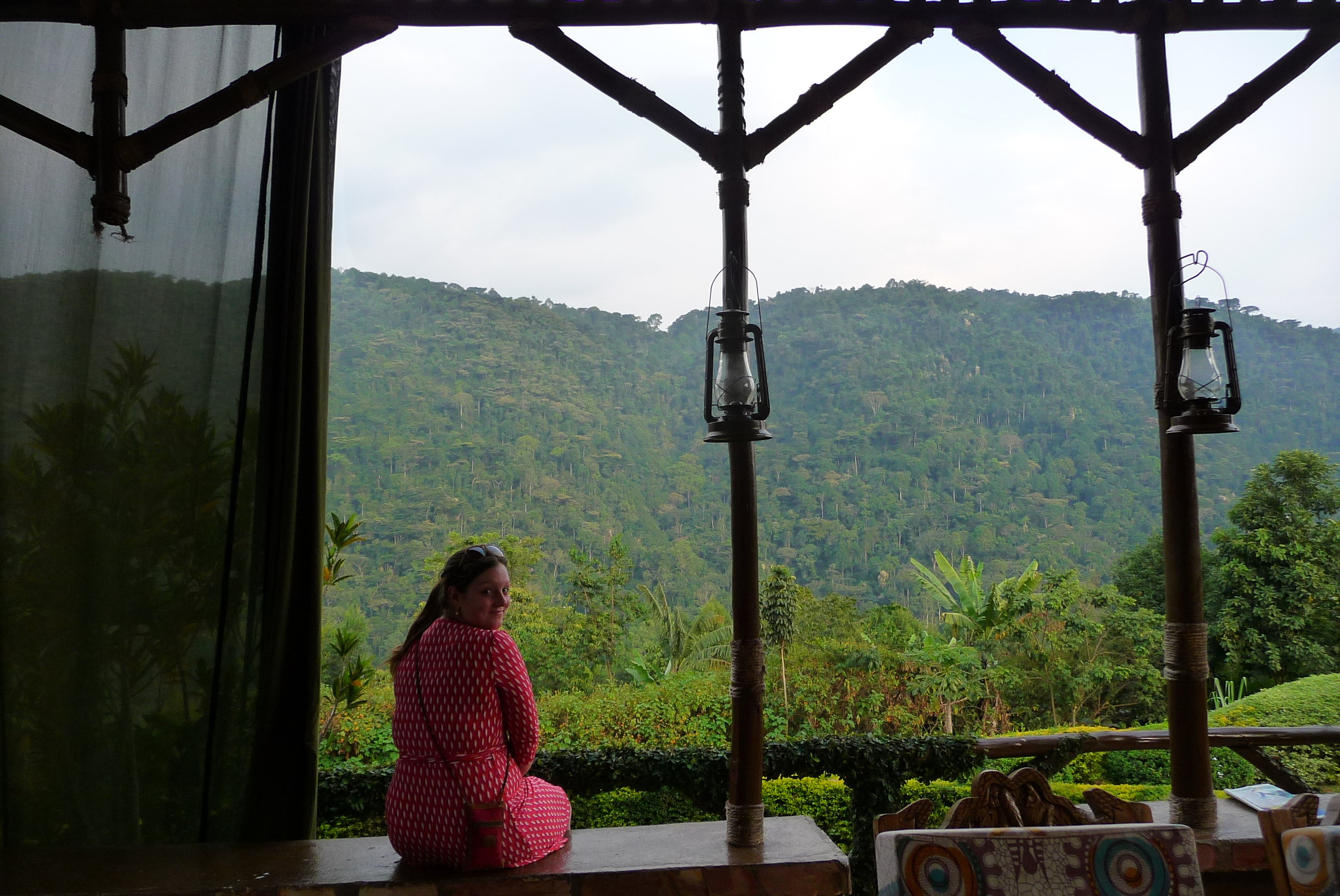
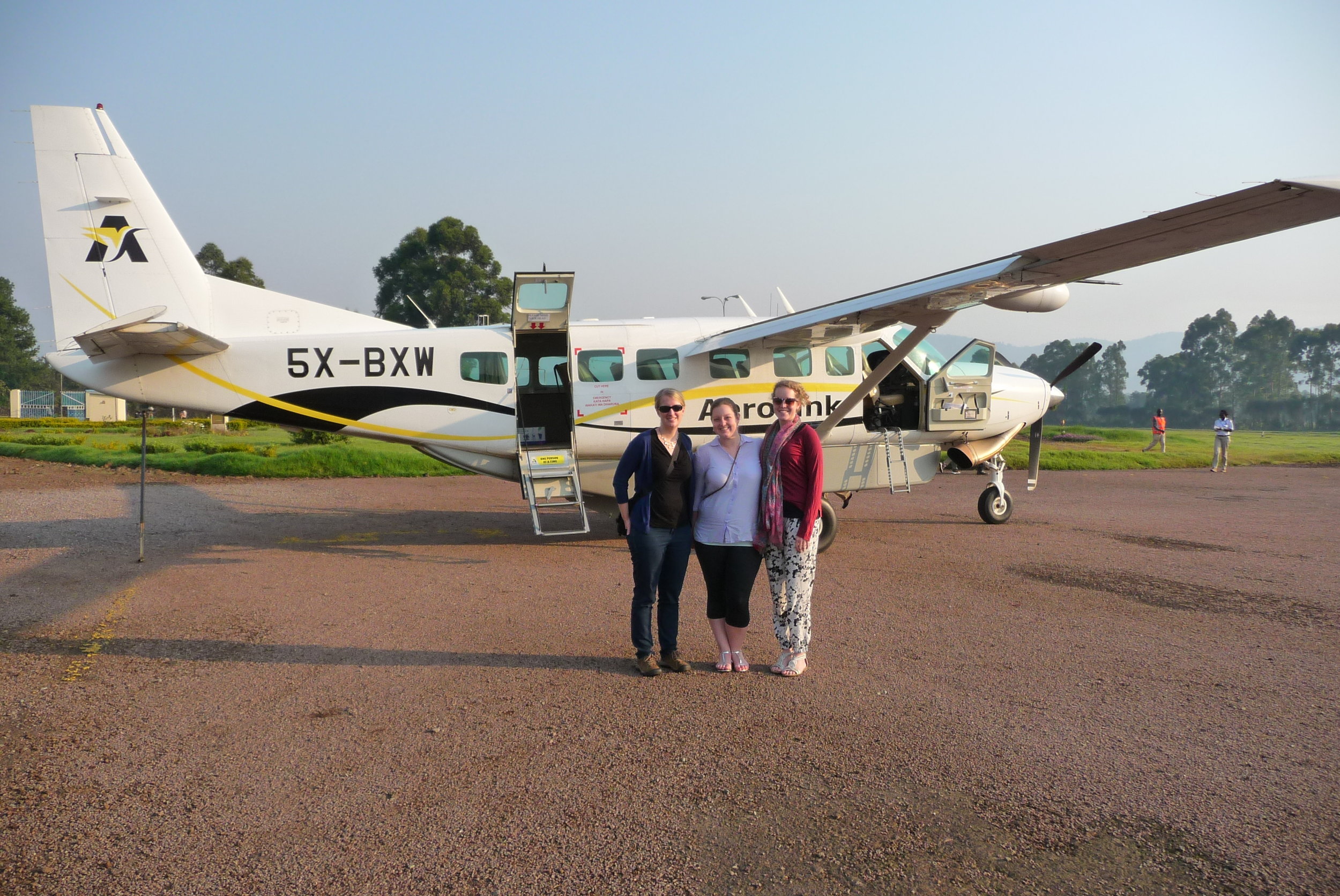
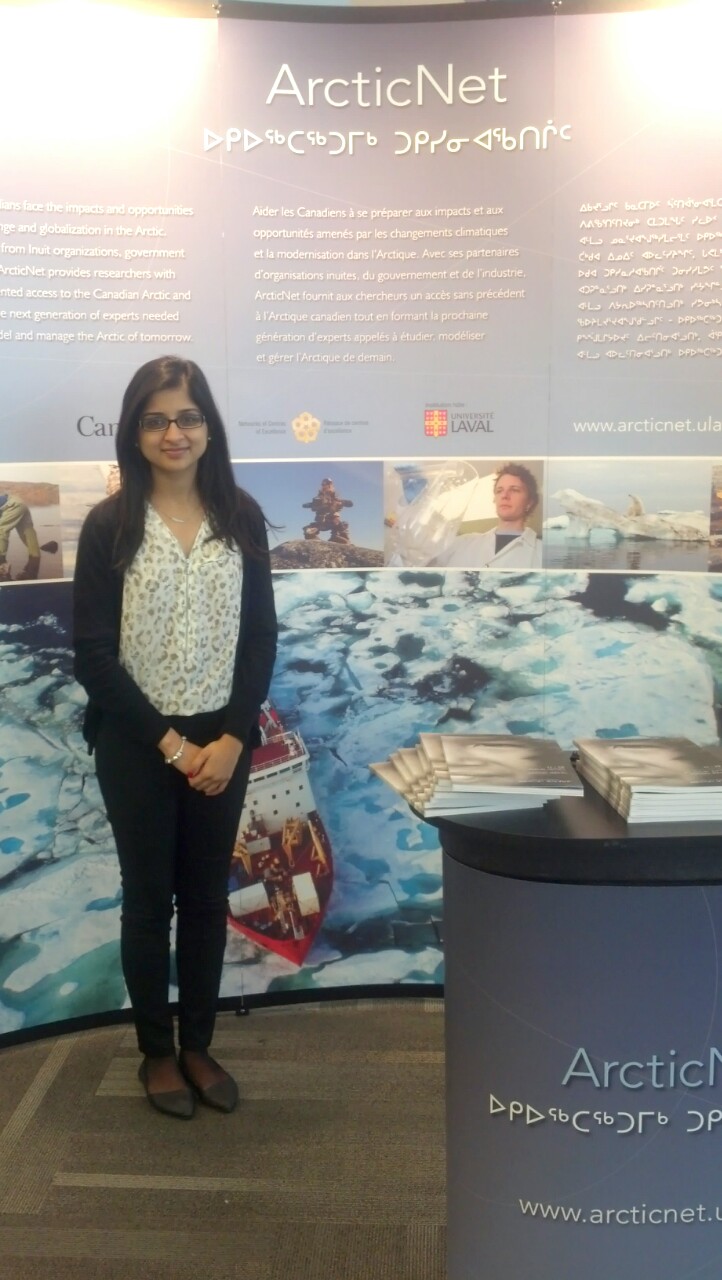
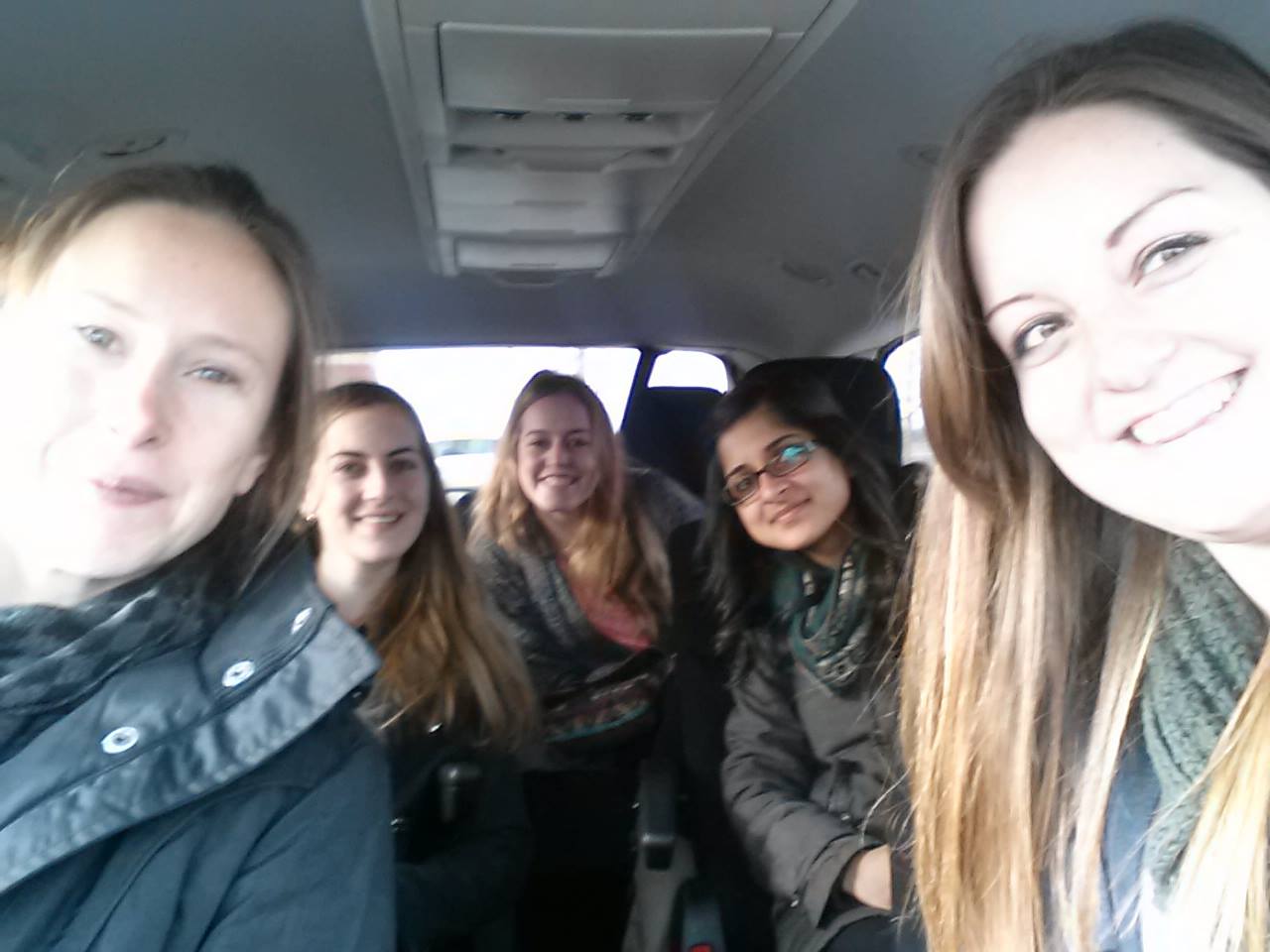 sion on “ADAPT as a model of project-level collaboration”. It was incredibly exciting to be here with a great group of individuals, researchers and specialists. We are looking forward to the upcoming days that are jam-packed with great talks, poster sessions and presentations.
sion on “ADAPT as a model of project-level collaboration”. It was incredibly exciting to be here with a great group of individuals, researchers and specialists. We are looking forward to the upcoming days that are jam-packed with great talks, poster sessions and presentations.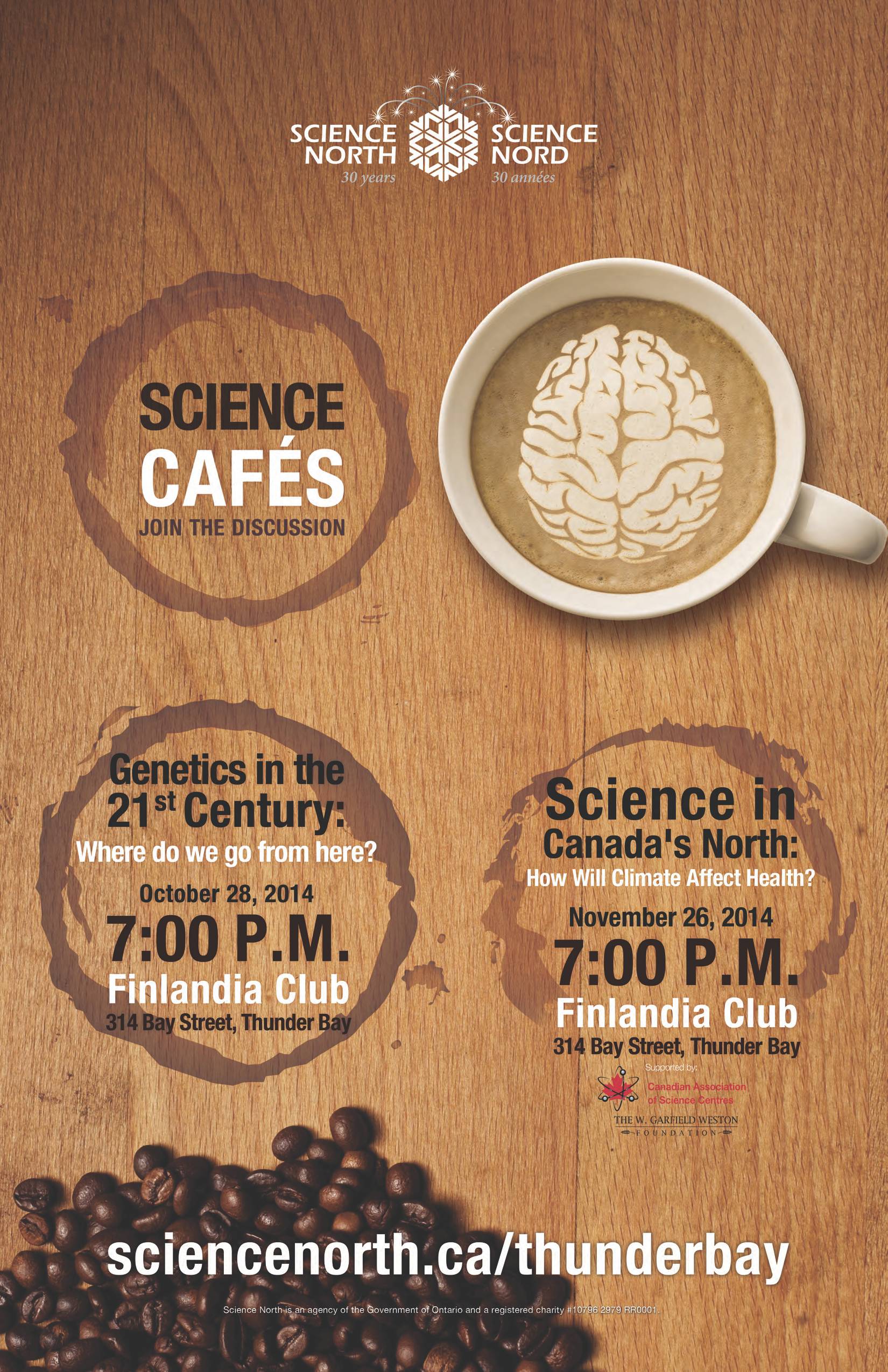

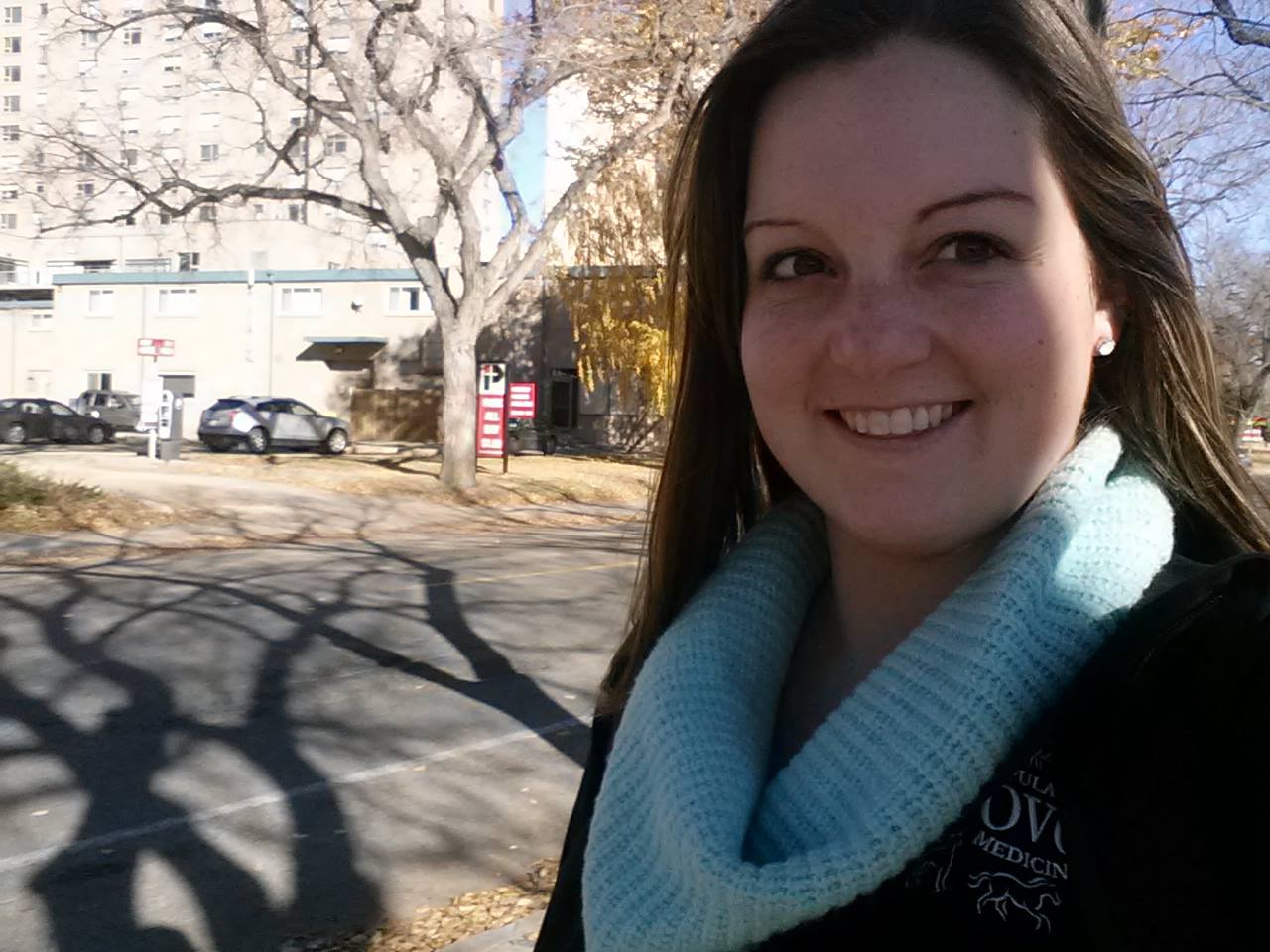
 The conference is being held in the Delta Bessborough, and it is absolutely gorgeous! The conference rooms where I and others have presented are quite spectacular.
The conference is being held in the Delta Bessborough, and it is absolutely gorgeous! The conference rooms where I and others have presented are quite spectacular.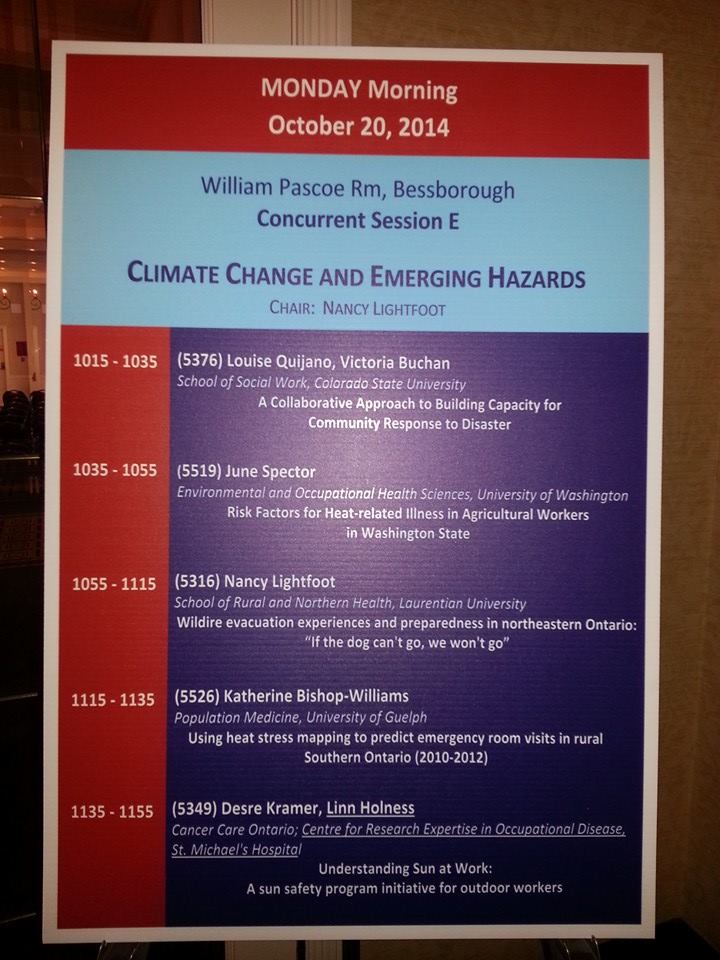 question that I developed independently, including suggesting the methods used. I personally contacted the 50 hospitals in rural Southern Ontario and secured a great response rate of 48%. I am incredibly proud of this work, as working with institutions such as hospitals can be challenging for reasons such as ethics and access to information. I presented at 11:15 AM, and was thrilled to have good attendance in the room, a full 15 minute slot to present, and a great discussion period to follow the presentation. I distributed my remaining infographics of the poster which was designed for this project (EcoHealth 2014, Montreal), and this again generated great conversation.
question that I developed independently, including suggesting the methods used. I personally contacted the 50 hospitals in rural Southern Ontario and secured a great response rate of 48%. I am incredibly proud of this work, as working with institutions such as hospitals can be challenging for reasons such as ethics and access to information. I presented at 11:15 AM, and was thrilled to have good attendance in the room, a full 15 minute slot to present, and a great discussion period to follow the presentation. I distributed my remaining infographics of the poster which was designed for this project (EcoHealth 2014, Montreal), and this again generated great conversation.
